
USA & CANADA (849)
Latest News
Why Donald Trump was bad for America but good for Canada
Monday, 10 October 2022 23:25 Written by theconversation 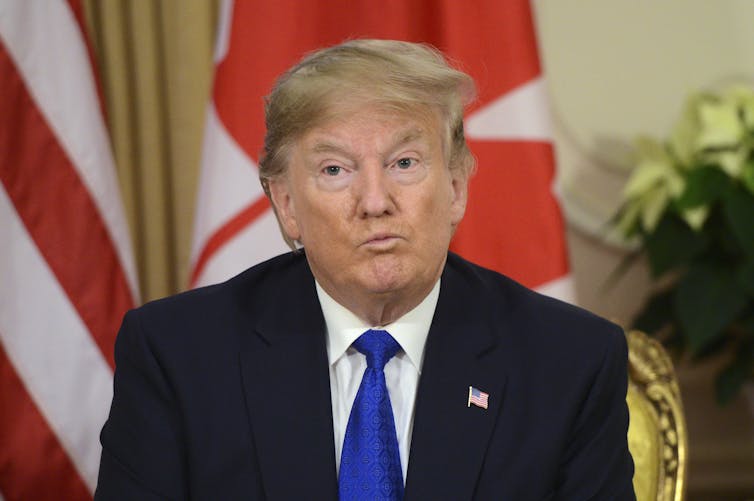
By now, it’s trite to say that the rise of Donald Trump as a political figure has been a travesty for American democracy.
Although the United States was already polarized prior to Trump becoming president, the country has increasingly veered into “pernicious polarization” territory since 2016, with partisan hostility at the highest it’s been in decades.
Despite lying thousands of times, flouting basic standards of human decency and showing little respect for American institutions, Trump has managed to shape the Republican Party in his image to the extent that loyalty to him now forms the litmus test for public legitimacy on the right.
Meanwhile, the attempted coup on Jan. 6, 2021 solidified what Democrats have feared since Trump announced his presidential campaign: that Trump and the MAGA Republican Party he’s birthed are a grave threat to American democracy.
Scoundrel, saviour
Understood from a cultural sociological perspective, Trump is the ultimate symbol of American polarization: he is a scoundrel to those on the left, and a saviour to those on the right.
Cultural sociology examines the role of symbols, narratives and meaning in social and political life. It begins from the assumption that everything is a matter of interpretation. People say and do things on the basis of what those things mean to them, and meanings vary from one person or group to the next.
So cultural sociologists like me are interested in the stories and scripts people have in their heads because they affect how they act.
As sociologists William Isaac Thomas and Dorothy Swaine Thomas famously put it: “If men define situations as real, they are real in their consequences.”
Canadians and Trump
As Trump fuelled polarization in the U.S., he was having a much different impact on Canada. A cultural sociological perspective helps explain why.
Two things need to be noted to make sense of this:
First, anti-Americanism has long been part of the Canadian national identity. As American sociologist Seymour Martin Lipset wrote in his book Continental Divide: The Values and Institutions of the United States and Canada: “Canadians are the world’s oldest and most continuing un-Americans.”
Canadian nationalism often takes the form of pride over not being American.
Second, since the launch of his presidential campaign in 2015, Trump has been almost unanimously disliked and disavowed by Canadians on both the left and right.
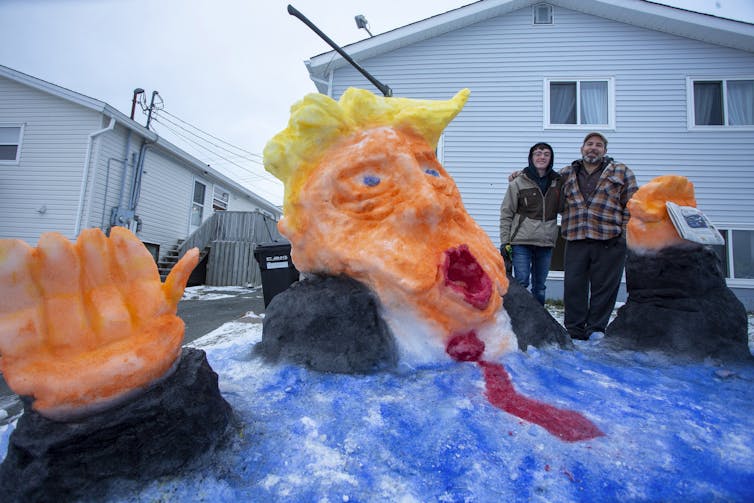
Polls taken in August 2016 showed that, if given the chance, only 15 to 20 per cent of Canadians would have cast a ballot for Trump, while 73 to 80 per cent would have voted for Hillary Clinton. And a poll taken just prior to election day in November 2016 found that more Canadians would support a third-party candidate than Trump.
This helps explain why, between 2016 and 2020, Canadians were united in their contempt for Trump, who served as a bipartisan symbol of evil they rallied against regardless of their political leanings.
This is evident in Canadian media coverage during this period. Upon analyzing mainstream print media articles published between 2016-2020 for an ongoing research project, I identified common themes: Canadian media increasingly associated “America” with “Trump,” and both of these with authoritarianism, selfishness, racism, bigotry, xenophobia, ignorance, irrationality, dishonesty and a lack of concern for the least advantaged.
Friendship on the rocks?
These attitudes were also reflected in public opinion surveys.
The Pew Research Center found that the number of Canadians who favourably viewed the U.S. fell from 68 per cent in 2015 to 43 per cent in 2017, and then again to 39 per cent in 2018 – the lowest percentage ever recorded.
In 2020, polls found that the number of Canadians who said they consider the U.S. “a friend” declined 29 percentage points since 2013, when pollsters first began asking the question.
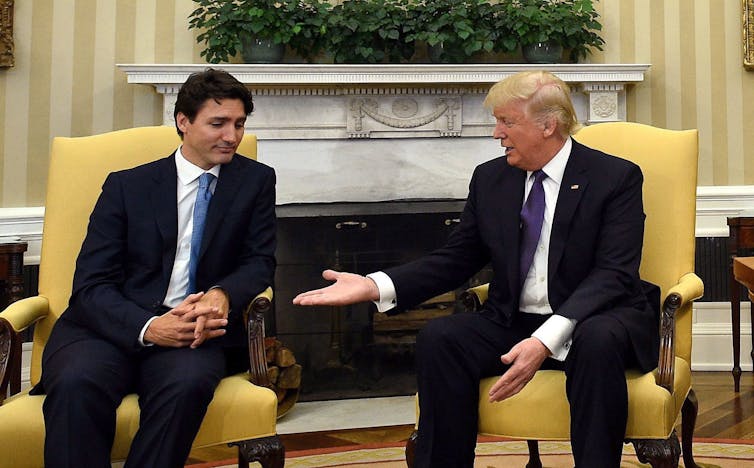
These shifts suggest that Trump really did change how Canadians regard the U.S. But he also changed how Canadians regard themselves.
I would argue that Trump led Canadians to be more receptive to progressive policy orientations — if only as a means of distinguishing themselves from Trump’s America.
The ‘Trump’ problem for Conservatives
Consider that nearly all attempts by conservative politicians to brand themselves as the Canadian Trump between 2016 and 2020 led to failure.
Not long after announcing he was seeking the leadership of the Conservative Party of Canada, business mogul Kevin O’Leary’s campaign was dead in the water — in part owing to the obvious similarities between him and Trump.
In 2018, the leader of the Parti Québécois at the time, Jean-François Lisée, channelled his inner Trump by floating the idea of building a fence at a Québec-U.S. border point to prevent asylum-seekers from crossing.

Lisée’s party was rewarded with a pitiful fourth-place finish in the 2018 Québec general election, forcing him to resign as party leader.
These examples show that being seen as Trump-like in Canada became a death sentence happily exploited by more progressive parties.
The Trump card was so potent that when Andrew Scheer’s replacement, Erin O’Toole, took over the party in 2020, he made a point of emphasizing that he was not a Canadian version of Trump.
O’Toole’s starkest departure from Scheer, his predecessor, revolved around social issues. Scheer identified as a “pro-life” social conservative whereas O’Toole publicly identified as “socially progressive.” And these words weren’t just rhetoric.

In early 2022, Canadian parliamentarians unanimously passed landmark legislation to ban conversion therapy in Canada — a bipartisan success story that O’Toole was instrumental in securing.
Finally, consider the dramatic differences between the Canadian and American response to the COVID-19 pandemic.
Canadian politicians were more willing to follow the directions of public health experts, and Canadians were more supportive of vaccine mandates. Canada’s death rate is significantly lower, while its vaccination rate is higher than that of the U.S. Some have argued that’s because America’s response got snared in partisan politics, unlike Canada’s.
So, not only did public recognition and respect of members of the LGBTQ+ community increase in the wake of Trump’s election, but lives were saved as a result of the leftward shift among Canadian conservatives.
And in all cases, the Trump effect was at play.
Trump in 2024?
This isn’t to suggest Trump’s continuing influence over the Republican Party is good for Canada. If America descends into civil war, Canadians will suffer with them.
Trump’s rise has also helped radicalize the Canadian far right. StatsCan found that hate crimes rose by 37 per cent in 2020, and, per capita, Canada is among the greatest global sources of extreme right-wing online content.
The ascent of Pierre Poilievre to the Conservative Party leadership suggests there’s a Canadian audience for Trump’s brand of toxic partisanship and crude populism.
If Trump runs again in 2024, his pugnacious style and anti-democratic ambitions could continue to appeal to some Canadians.
But it’s likely he’ll motivate Canadians to continue to work towards a more inclusive and egalitarian society.![]()
Galen Watts, FWO / Banting Fellow, Centre for Sociological Research, KU Leuven
This article is republished from The Conversation under a Creative Commons license. Read the original article.
Long-term renters evicted during housing boom face homelessness
Monday, 10 October 2022 01:22 Written by theconversation 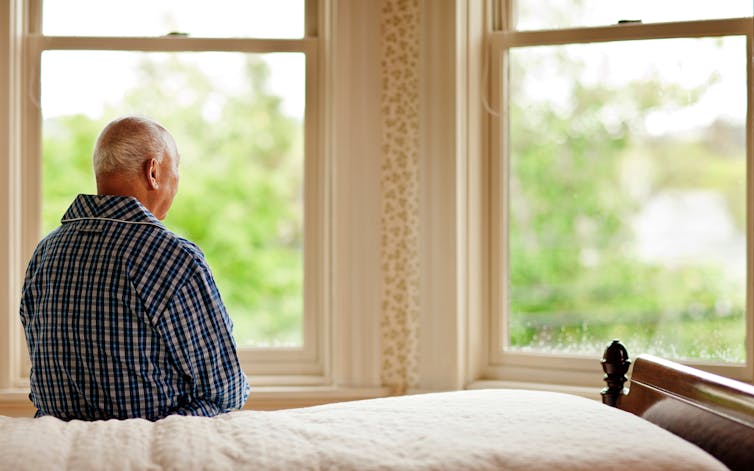
Edith Wilson, University of Guelph
Andy would rather remain as anonymous as possible because, “it’s kind of embarrassing people knowing how little you have.” He has been living in his home for 21 years. It is a postwar house in the Greater Hamilton, Ont. area with a covered front porch, postage stamp lawn and plaster that has begun to crack. His cat, who “isn’t as friendly as she looks,” likes to sleep in his TV chair in the front room. Andy is single and on a fixed income. And his landlord is selling the house.
I spoke to Andy when I went to view the property with my husband. We recently qualified for a small mortgage and are looking for a fixer-upper. I’m a PhD candidate at the University of Guelph studying non-profit housing advocacy and he is an architectural technologist.
That’s how I ended up meeting the elderly gentleman with the neatly combed white hair. Andy is only one example of an under-discussed but very real problem within Canada’s housing crisis.
As property values hit historic highs in cities across Canada, long-term renters find themselves in an increasingly precarious position.
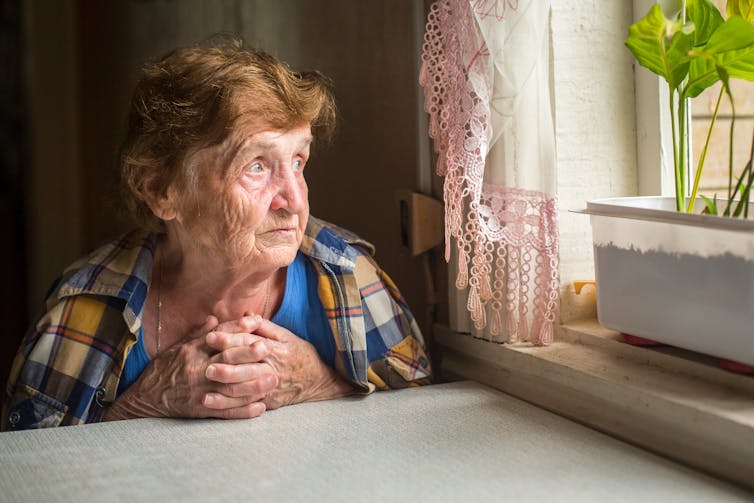
Skyrocketing rents
As real estate prices rise, the temptation for landlords to sell is high. Even the market correction we are currently experiencing pales in comparison with the rise over the last few years. The average price of a home in Canada this August (heavily influenced by the Toronto and Vancouver markets) was $637,673. That is down 3.9 per cent from the same month last year, but still much higher than the average of $504,409 five years ago.
The average monthly rent for a two-bedroom apartment in Hamilton, the closest city to where Andy lives, is $1,362. Twenty-one years ago, it was $740. Because Andy has been in his apartment for so long, he pays $525 in rent. That is around 25 per cent of his income, which is below $2000 a month.
Renters in Ontario are grandfathered in at their original rent, plus the yearly legally allowed increase, which since 2000, has ranged from 1.5 to 2.9 per cent of the rent. However, landlords can still raise rent at their discretion between tenants — a result of Mike Harris’ government scrapping vacancy rent control in 1997, the same year the federal government disinvested from social housing. Vacancy rent control is when there are limits on how much a landlord can raise rents in between tenants and when a property changes hands.
Real risks of homelessness
But selling property out from under long-time renters, some of them elderly and on fixed incomes, can have devastating consequences. Waitlists for rent-geared-to-income housing in Ontario are long — in Toronto, a staggering 80,532 people are on the active waitlist.
Waitlists for subsidized housing can be up to 10 years long. Andy says that where he lives, “I’m on a list to be on the list — a year, maybe?” So a person cannot be guaranteed a rent-geared-to-income placement before they are expected to vacate their home. There are also the more intangible things that make a home one’s own.

Andy owns his own kitchen appliances and likes to cook. “If they stuff me in a little apartment, I’ll have to give up my dream stove. I call it my dream stove cause it has gas and a grill and everything… It’s the little things, you know, that bother you the most.”
The government should not assume that family and friends can pick up the slack of a flagging social housing system. If their landlord decides to sell and they’re a single, long-term renter from a working-class family, whose friends are also working class, everyone they know might be in a similar situation. If the house sells and people are not at the top of the rent-geared-to-income waitlist, a person could face homelessness.
What is to be done?
My first suggestion would be to modify the affordability standards in the Rental Construction Financing Initiative, which forms a large part of the National Housing Strategy investment. Currently, a large portion of these funds go to for-profit developers who promise to abide by the NHS’s affordability standards.
However, the standards define affordability as up to 30 per cent of the median income of all families in the area (including homeowners and wealthy families). In some areas, by the NHS’s standard, affordability can be counted as high as $1500 a month. Furthermore, units must be kept at this “affordable” level for only 10 years.
Affordability should be calculated in a way that focuses on the median of lower-income households only. If funds allocated to build affordable housing are based on that metric, it might help build up a more affordable stock.
Robust investment in permanent housing that is affordable for lower-income households would help curb the immediate crisis affecting Andy and so many others. This would go a long way towards stabilizing the rental market so that if people need to change residences, they won’t be left out in the cold.![]()
Edith Wilson, PhD Candidate, Department of Sociology, University of Guelph
This article is republished from The Conversation under a Creative Commons license. Read the original article.
Ethno-racial minorities in Canada have less access to affordable housing than white people
Monday, 26 September 2022 02:04 Written by face2faceafrica 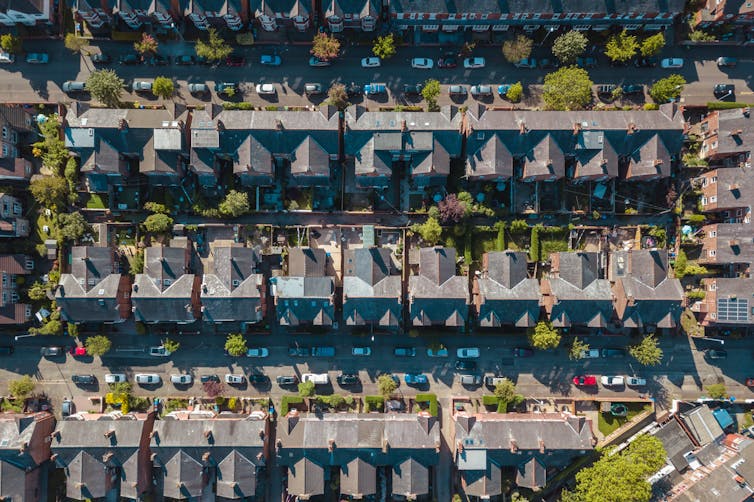
Kate Choi, Western University and Sagi Ramaj, University of Toronto
Canada is grappling with a housing affordability crisis. Housing prices and rent have increased dramatically over the past few years. Families are increasingly spending 30 per cent or more of their pre-tax income on housing costs.
High housing costs leave families little money for other necessities like food or health care. They also prevent them from saving for future emergencies. Because of this, limited access to affordable housing is linked with lower life satisfaction and poor mental health.

To address the housing affordability crisis, the Canadian government launched the National Housing Strategy in 2017, which sought to invest $72 billion to increase housing supply.
For this policy to be successful, the government must accurately assess which groups have the most barriers to affordable housing and why they are vulnerable.
Filling the research gap
Prior work has shown that recent immigrants, single mothers and residents of large cities are less likely to live in affordable housing in Canada. Researchers rarely examine whether visible minorities are less likely than white people to live in affordable housing in Canada.
Our new study on Canada’s affordability crisis partially closes this knowledge gap. We used data from the 2016 Canadian Census to document ethno-racial variations in access to affordable housing. Once these patterns were established, we identified why certain ethno-racial groups have less access to affordable housing.
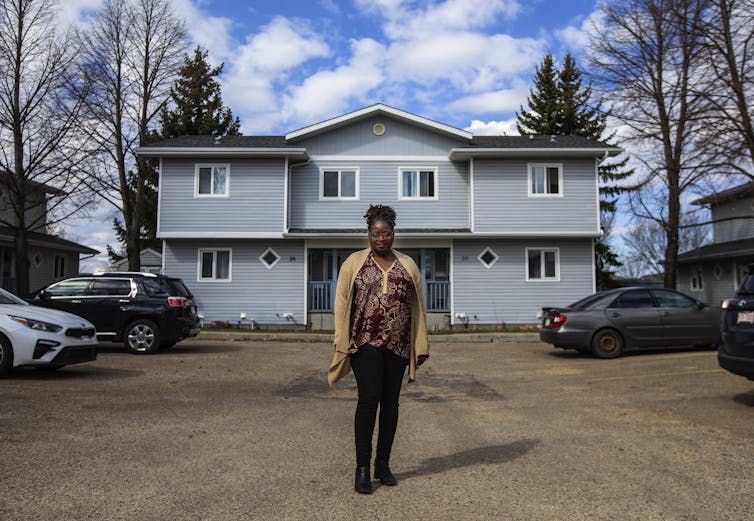
We found that visible minorities have less access to affordable housing than white people in Canada. Unaffordable housing rates were especially high among Middle Easterns, North Africans, East Asians and South Asians.
Not surprisingly, there are different reasons why specific ethno-racial groups struggle with housing affordability. Middle Eastern and North Africans have limited access to affordable housing primarily due to their high unemployment rates. In contrast, rates of unaffordable housing are high for East and South Asians largely because they tend to reside in large urban cities, where housing prices are high.
Lessons from the COVID-19 pandemic
Many visible minority groups in Canada have had disproportionately high COVID-19 infection rates compared to the rest of the population. One reason for this was because visible minorities were more likely to live in overcrowded housing than white people and other minority groups.
These findings suggest that some visible minorities may be grappling with housing affordability problems. To pay the mortgage or rent, they may have to “double up” by moving in with other families. They may also have to live in inadequate housing without necessary amenities like proper ventilation.
Housing vulnerability across immigrant generations
Our study also showed that immigrants were generally more likely than Canadian-born members of their own ethno-racial group to live in unaffordable housing.
Black Canadians, however, were the exception. The unaffordable housing rates of Canadian-born Black people differed little from those of foreign-born Black people. Among the Canadian-born, Black people had the highest unaffordable housing rates, along with Middle Eastern and North Africans.
These findings suggest that most immigrant groups in Canada are able to achieve the socioeconomic mobility necessary to meet their housing needs over time. Black Canadians, however, encounter persistent barriers in access to affordable housing, including racial discrimination in the rental market and in financial institutions.
Policy implications
Four lessons emerge from our study. First, policymakers should increase the housing supply in large cities — like Toronto and Vancouver — where housing prices have increased the most in recent years. These cities are also home to many visible minorities, immigrants and young families, who are struggling with housing affordability.

Second, we need to increase the wages of Canadian workers. Increasing wages offers an alternate solution to the unaffordable housing crisis. This would be a solution for many groups in Canada, including Middle Eastern and North Africans.
Third, greater efforts must be made to remove barriers to accessing affordable housing among Black Canadians.
Lastly, Canadian immigration policies should aim to increase recent immigrants’ access to affordable housing, since they are more likely to live in unaffordable housing. If the federal government plans to welcome 430,000 permanent residents per year over the next three years, it must ensure these residents can afford housing, if they are able to become productive and thriving members of Canadian society.
The National Housing Strategy’s goal is to make affordable housing available to all Canadians. Ensuring that visible minorities have greater and equitable access to affordable housing is an important step in fulfilling that goal.![]()
Kate Choi, Associate Professor, Sociology, Western University and Sagi Ramaj, PhD Student, Department of Sociology, University of Toronto
This article is republished from The Conversation under a Creative Commons license. Read the original article.
Are Nigerian State Houses Of Assembly Speakers lawless? Nigerian State Assembly Speakers On Study Visit Assault Nigerians In Canada
Sunday, 25 September 2022 13:12 Written by ToriSome Nigerians approached them during the visit to deliver a protest message to President Muhammadu Buhari, a request which made the speakers to lose their cool and throw caution to the wind.
Popular News
Judge rules in favor of Trump against Justice Department, blocks review of seized classified records
Friday, 16 September 2022 22:36 Written by oasesnews A U.S. judge on Thursday September 15, sided with former US president Donald Trump, by refusing to let the Justice Department immediately resume reviewing classified records seized by the FBI from Trump's Florida estate in an ongoing criminal investigation. Federal Judge Aileen Cannon also appointed Senior District Judge Raymond Dearie as a third party to review records seized by the FBI for materials that could be privileged and kept from federal investigators. Cannon's ruling further complicates the Justice Department's investigation into Trump's alleged handling of classified records. The special master's review could bar prosecutor from viewing documents seized as they weigh the possibility of criminal charges against the former president who is planning on coming out for president in 2024. About two weeks after the search, Trump's attorneys sought the appointment of a special master to review the seized records for materials that could be covered by attorney-client privilege or executive privilege - a legal doctrine that can shield some presidential records from disclosure. 
The Justice Department also sought to block the independent arbiter, Dearie, from vetting the roughly 100 classified documents included among the 11,000 records gathered in the court-approved Aug. 8 search.
"The court does not find it appropriate to accept the government’s conclusions on these important and disputed issues without further review by a neutral third party in an expedited and orderly fashion," Cannon wrote Thursday, September 15.
Cannon on Thursday said she would instruct Dearie to prioritize reviewing the classified records first. She also directed him to complete his review of all the seized materials by Nov. 30.
Trump's lawyers in Monday's filing disputed the department's claim that the roughly 100 documents at issue are in fact classified, and they reminded Cannon that a president generally has broad powers to declassify records. They stopped short of suggesting that Trump had declassified the documents, a claim he has made on social media but not in court filings.
The Justice Department is investigating Trump for retaining government records - some marked as highly classified, including "top secret" - at his Mar-a-Lago estate in Palm Beach after leaving office in January 2021.
The department is also looking into possible obstruction of the probe after it found evidence that records may have been removed or concealed from the FBI when it sent agents to Mar-a-Lago in June to try to recover all classified documents through a grand jury subpoena. The Justice department says it will take the case to the appeal court after losing to Trump on Thursday.
Cannon was appointed to the bench by Trump in 2020.
The death of Queen Elizabeth: Canada became less British during her reign
Saturday, 10 September 2022 13:01 Written by theconversation 
Thomas Klassen, York University, Canada
The death of Queen Elizabeth, the longest reigning monarch in British history, marks the end of an era for Canada.
Elizabeth witnessed the opening of the St. Lawrence Seaway in 1959, the expansion of Canada’s social programs in the 1960s, the Québec referendums in 1980 and in 1995, free-trade agreements with the United States and father-and-son prime ministers. In 1982, she signed the proclamation that repatriated the Constitution, ending the role of the British Parliament in Canada’s affairs.

During her long reign, Canada became dramatically less anglophone and anglophile. Nearly half of Canadians were of British ancestry when she assumed the throne in 1952, but that decreased to one-third in 2016 and continues to decline.
In the 1950s, high-school students across English Canada waved the Union Jack, sang the royal anthem (God Save the Queen), said the Lord’s Prayer and cheered cadet corps dressed in British khaki. Elizabeth saw the replacement of the Union Flag by the Maple Leaf in 1965, and the royal anthem by O Canada in 1980.
Over seven decades, Elizabeth successfully transitioned from embodying the key traditions and beliefs of many, to a warmly regarded, but not particularly significant, figure in the lives of Canadians. She remained personally popular in Canada, although she spent relatively little time (about 200 days) in the country over visits that averaged one every three years.
Her dedication to the job as monarch was viewed favourably, as was the absence of scandal in her personal life. She harnessed goodwill from Canadians mostly as an individual, rather than as the hereditary head of an institution while acting as a living link to Canada’s days as a colony in the British Empire.
Charles lacks popularity
A poll on her performance, conducted in 2020, found eight in 10 Canadians believed that the Queen has done a good job in her role as monarch.
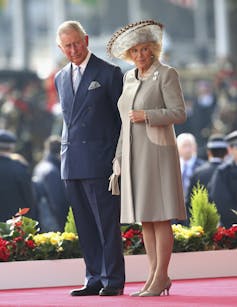
But the poll also found that half of Canadians agree that the country should terminate formal ties to the monarchy after the end of Elizabeth’s reign.
And a more recent poll in 2021 found that only one in five Canadians want to see Prince Charles become king, while only one in three would like Prince William to ascend to the throne.
Elizabeth’s successors — Charles, whose time as king given his age (73) will be relatively short, and William, who will follow — assume the job at a different time in Canada’s history.
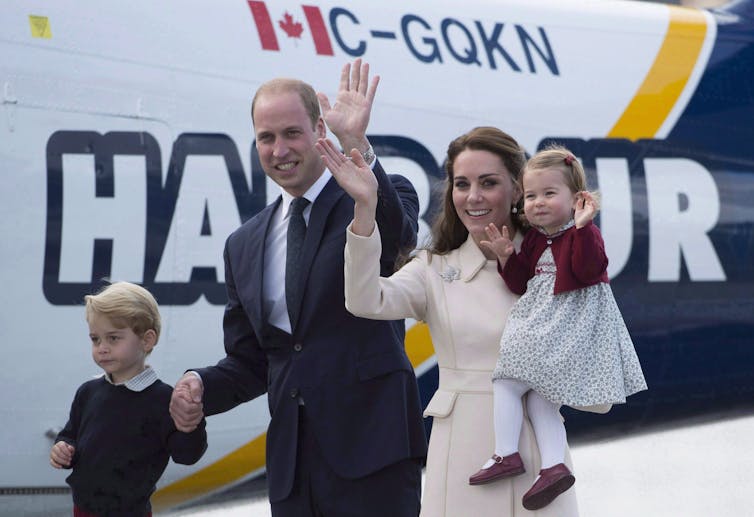
Charles takes on the job as head of state for a Canada almost unrecognizable from what the country was in 1952 in terms of the role of religion in the lives of its citizens, the diversity of its inhabitants and its geo-political relations.
Prime Minister Justin Trudeau has been carefully non-committal on the future of the monarchy. In March 2021, he said:
“If people want to later talk about constitutional change and shifting our system of government, that’s fine. They can have those conversations.”
With a minority government, he may be hesitant to spend political capital on constitutional reform.
Gauging the mood
On the other hand, prime ministers are opportunists. The transition to a new monarch — an event that has not occurred in the lifetime of the vast majority of Canadians – is an occasion to gauge the mood of the populace and review existing arrangements.
The constitutional file has a special appeal for politicians looking to create or cement a legacy. Pierre Trudeau’s defining triumph was repatriating the Constitution, a few years after his iconic pirouette behind the Queen’s back in 1977 during a G7 summit.

Elizabeth’s great accomplishment, aided by genes that allowed an extraordinarily long and healthy life, was to keep at bay discussions of the future of the monarchy in Australia, New Zealand and the other former British colonies of which she was the head of state. Her death will permit debate and deliberation to start.
As Canadians mourn the passing of the Queen, they should also reflect on the continued relevance and meaning of the monarchy in a nation reconciling with its colonial past and seeking its place on a complex global stage.![]()
Thomas Klassen, Professor, School of Public Policy and Administration, York University, Canada
This article is republished from The Conversation under a Creative Commons license. Read the original article.
Why Canadians should be concerned about intensifying violence in Congo
Saturday, 10 September 2022 12:59 Written by theconversation 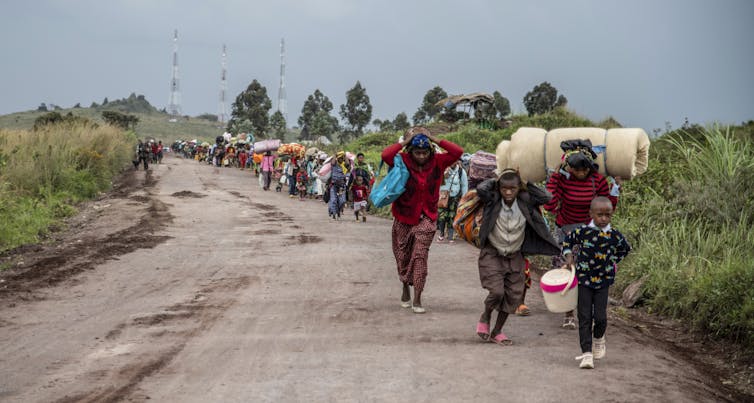
Christina Clark-Kazak, L’Université d’Ottawa/University of Ottawa
Escalating violence in the Democratic Republic of Congo (DRC) stems from deep economic, political and geopolitical conflict spanning almost three decades.
At the height of what’s been called by experts “Africa’s World War” at the turn of the 21st century, the conflict pitted Congolese government forces supported by Angola, Namibia and Zimbabwe against several opposition armed groups backed by Rwanda and Uganda.
Numbers were difficult to verify, ranging from 2.5 million to 5.4 million, but this period is often cited as the largest loss of life since the Second World War.
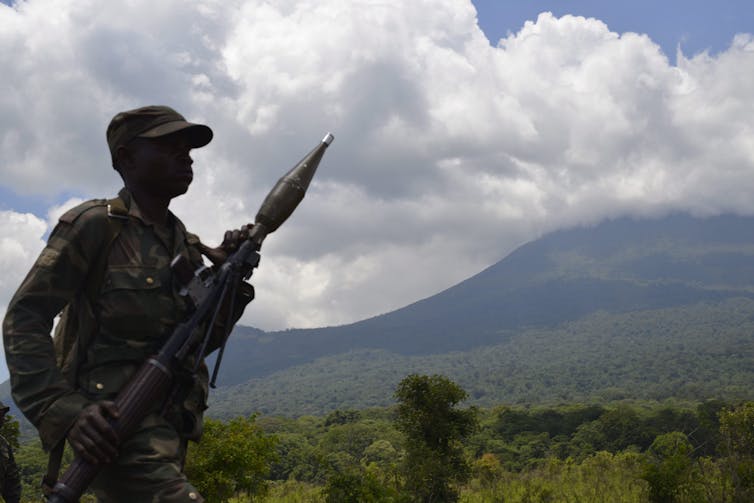
There was also widespread rape and sexual violence, child soldiering, forced displacement and human rights abuses.
Recent violence threatens fragile peace in the DRC and the African Great Lakes region. But despite escalating death, displacement and fear, Canadian media have largely ignored the DRC conflict.
In addition to concern for human life, Canadians should care for three key reasons.
1. Mineral extraction
The increasing demand for mobile phones and electric vehicles is linking consumers to violent extraction in the DRC.
The country is rich in minerals and is the source of 60 per cent of the world’s reserves of coltan, which powers our cellular phones. It also produces more than 70 per cent of the world’s cobalt, used in electric car batteries.
The extraction of these minerals comes at great human cost.
Researchers have documented the use of child labour, environmental degradation, sexual violence and economic rationale for war — meaning some have profited from mineral exploitation and war while the majority of the Congolese population lives in poverty.
As consumers, Canadians should care about how our purchases are linked to violence and human rights abuses in a globalized world.
2. Canada supports peacekeeping in the DRC
Canada has contributed human and financial resources to peacekeeping in the DRC.
Once the largest and most expensive peacekeeping operation in the United Nations’ history, the UN’s current mandate in the DRC has been scaled back.
Ongoing allegations of UN personnel involved in sexual exploitation, economic profiteering and ineffectiveness have turned the Congolese people against the UN.
Recent protests have been violent, resulting in the deaths of 36 people, including four UN peacekeepers.
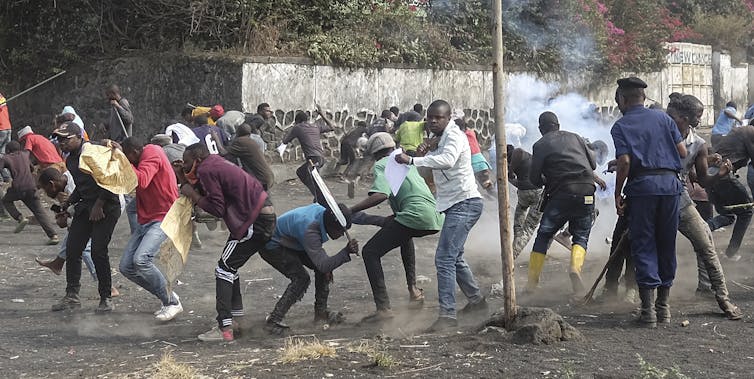
The UN has temporarily withdrawn from Butembo, a major city in eastern Congo. The Congolese government has also expelled the UN mission’s spokesperson.
Given Canada’s investments in peacekeeping operations in the DRC, Canadians should demand accountability for alleged human rights violations by UN officials.
Canadian multilateral diplomacy also has a vested interest in ensuring the credibility of UN peacekeeping to maintain and promote peace. The DRC is central to regional stability as the second-largest country in Africa bordering nine neighbours.
3. Canadian-Congolese connections
Ongoing violence in the DRC has caused people to flee Congo to neighbouring countries and to Canada. The DRC consistently ranks among the top countries in terms of alleged persecution in refugee claims in Canada.
Congolese refugees are resettled to Canada through private sponsorship or government assistance streams, and Canada is a destination for Congolese international students. At a time of declining French-language speakers in Canada, Congolese-Canadians make up an important percentage of francophones.
These human connections can be leveraged by the Canadian government for expertise on the situation in the DRC, and Canada’s response.
How should Canadians respond?
Canada is connected to the DRC through the global economy, international peacekeeping efforts and migration. We must not ignore violence because it’s far away.
As consumers, we need to hold companies accountable for ethical sourcing of materials in our cellular telephones and electric vehicles.
We need accurate and timely information on events unfolding in the DRC. If Canadian media do not have resources for dedicated reporting, they should amplify stories from credible local, regional and international news organizations.
As constituents, we need to call on our MPs and the ministers of Foreign Affairs, Defence and International Cooperation for accountability for Canadian and UN peacekeeping in the DRC.
While Canadian officials have said no Canadian personnel were injured in the recent anti-UN violence, they have not publicly commented on the underlying reasons for the protests.
The Canadian government should convene a group of experts, including Congolese-Canadians, to review Canada’s role in the DRC and propose a strategy for current and future peace support operations in the country.
As a long-standing contributor to peacekeeping in the DRC, Canada has a responsibility to ensure that our interventions respect human rights and contribute to lasting peace.![]()
Christina Clark-Kazak, Associate Professor, Public and International Affairs, L’Université d’Ottawa/University of Ottawa
This article is republished from The Conversation under a Creative Commons license. Read the original article.
How the ‘Queen of Canada’ is making inroads into the U.S., Australia and beyond
Saturday, 03 September 2022 13:51 Written by theconversation 
Christine Sarteschi, Chatham University
Romana Didulo is a Canadian conspiracy theorist who falsely asserts she is the queen and ruler of Canada. On her instructions, some of her disciples recently attempted to arrest police officers in southern Ontario.
The plan was then to turn the police over to the military to be tried as war criminals. If convicted of crimes against humanity, the police officers would be executed, according to Didulo. Instead, her followers were arrested and charged with assaulting police officers.
Nonetheless, Didulo is making strides in replicating her movement in the United States and beyond.
This expansion began in July 2022. As a behavioural scientist and researcher of what’s known as the sovereign citizenship movement, I have been monitoring Didulo and how she’s expanding her reach.
In the United States, the “Kingdom of America” is now being led by “His Highness King David J Carlson” and his wife “Her Highness Lady Sarah MG Carlson.” The couple are residents of Arizona but little else is known about them.
‘Clinton cartel’
“King Carlson” claims to be “Commander-in-Chief” of the “United States Armed Forces Civilian Command.” He claims he was awarded this position after a failed coup attempt “by the Clinton cartel to overthrow the election of Donald Trump. The military then stepped in and made sure that Donald Trump actually took office.”
The military then allegedly showed its gratitude by making him King of America and commander-in-chief. He offers no evidence to support his contention.
If the Carlsons and Didulo have their way, they would install a “benevolent monarchy” under natural law or God’s law. Didulo’s 79 royal decrees would become law. As “civilian white hats” (a QAnon reference to freedom fighters), the people would become “sovereign free beings,” guided by “sovereign principles.”
They want to create “secondary government for if and when the other governments fall or fail.” Their monarchy system would eliminate politics seen as divisive and a tool used by the “evil cabal” to “brainwash humanity.”
They are currently recruiting volunteers for leadership positions in all 50 states. To date, they have identified “ministers” for 30 states. These ministers are encouraged to build a following for themselves and to create their own security teams. King Carlson has also appointed a “Minister of National Global Intelligence, US Navy,” a “Minister of Global Affairs” and an “Advisory Minister of the Kingdom of America, US Army.”
As part of the Carlson-Didulo outreach efforts, they’ve been contacting public officials. They have written letters to the attorney general of Florida, Miami-Dade County officials, managers for the city of Miami, veterans’ groups and high-profile Republicans via the social media website, Truth Social.
They write that the movement “is being brought to the world’s attention, [and] the Kingdom of America will be mirroring her Royal Majesty Queen Romana.”
Rift developing
Interestingly, a rift between King David and Queen Romana has emerged. Despite her contention that she’s queen, he does not yet consider her as such (he says she’s a contender and in the running). Carlson also believes that Didulo’s decrees are not law, but he aims to implement them.
The most noteworthy decrees erase all debts, make electricity free, abolish income tax and make water bills illegal. Didulo’s followers have responded by not paying their bills, and are beginning to lose their properties and homes.
Her edicts are causing tangible harm to her followers. If her movement gains traction in the U.S. and other countries, we can expect similar outcomes.
Beyond the leaders Didulo has appointed in the United States, leaders have also been appointed for Australia, New Zealand, Austria, Germany, England, Vietnam, Switzerland, Hungary and the German state of Bavaria.
Didulo announced a woman named Helen Edwards is now “queen, commander-in-chief and president” of Australia and New Zealand. Edwards was chosen by Didulo because she was “familiar with her work more than anyone else” and for her fight against the “deep state cabal.”
Edwards has since started her own page on the Telegram messaging app to communicate with her subjects.

She states, in her personal biography, that she had previously worked as a public interest officer, a cybercrime analyst, is an advocate for justice and is a humanitarian. In the footsteps of Didulo, she too regards herself as a benevolent ruler.
The new leader of Germany and Austria is “Her Royal Majesty Queen Regina.” “Her Royal Majesty Queen Xuyen Nguyen” will rule Vietnam, and “Her Royal Majesty Queen Meryl” has been tapped to run Switzerland.
Five leaders, from the “Kingdom of Britain for Natural Law,” publicly discussed their plans to parallel Didulo’s ideology in their respective towns. They spoke about their decision to stop paying their bills, fully expecting not to lose their homes. One of the leaders, mimicking Didulo’s travel in an RV, said she would also be travelling around, greeting the people.
‘Sovereign citizens’
Didulo and her people are seeking to replace legitimate governments in all of North America via their movement. Her claims are many, outrageous and all without proof.
She claims to be a reptilian shape-shifter who can become invisible at any given time. She claims to have healing chambers aboard her many space ships, with the power to heal any disease and only available to her believers.
Many of her edicts mandate the death penalty. She has advocated hanging people upside down from helicopters and dropping them to their deaths in crocodile-infested waters.
Her claims, though ridiculous and without seeming merit, led directly to the alleged assault of Canadian police officers.
She may be laughable but she is most certainly not harmless, and her movement’s global expansion needs to be taken seriously by authorities.![]()
Christine Sarteschi, Associate Professor of Social Work & Criminology, Chatham University
This article is republished from The Conversation under a Creative Commons license. Read the original article.







